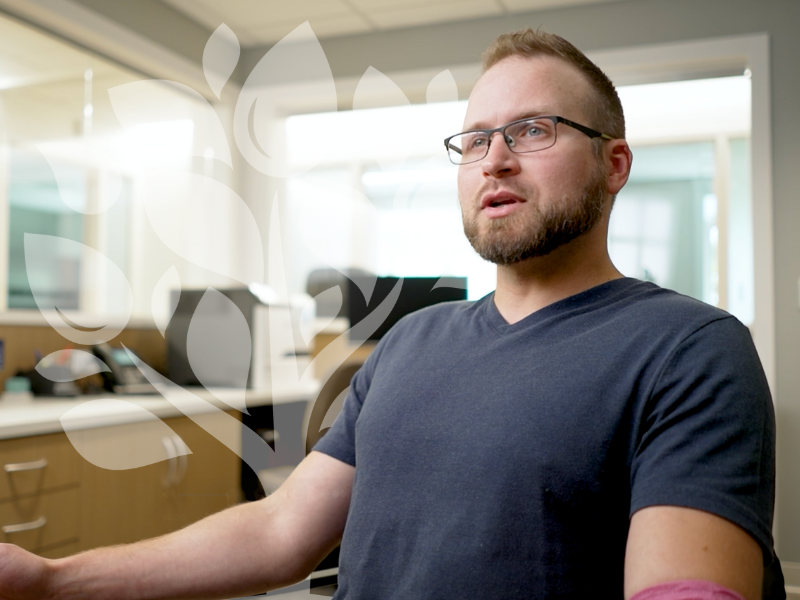Understanding Von Willebrand Disease
What is Von Willebrand Disease (VWD)?
Von Willebrand Disease (VWD) is a genetic bleeding disorder caused by a deficiency or dysfunction of von Willebrand factor (VWF), a protein essential for blood clotting. Affecting both men and women, VWD can range in severity, with symptoms such as frequent nosebleeds, easy bruising, heavy menstrual bleeding, and prolonged bleeding after injuries. Managing VWD effectively requires understanding the condition and taking proactive steps to reduce bleeding risks.
Why Management is Key
While there is no cure for VWD, consistent management can significantly improve quality of life. By following treatment plans, making informed lifestyle choices, and working closely with healthcare providers, individuals with VWD can minimize symptoms and lead active, fulfilling lives.
Management Tips for Living with VWD
Adhering to Treatment Plans
The cornerstone of managing VWD is adhering to your treatment plan. This often includes medications such as:
- Desmopressin (DDAVP): A synthetic hormone that boosts levels of von Willebrand factor and clotting factor VIII in mild cases.
- Von Willebrand Factor Concentrates: Replaces missing or defective VWF in moderate to severe cases.
- Antifibrinolytic Agents: Helps stabilize clots and reduce bleeding risks in areas such as the mouth or nose.
Regular consultations with your healthcare provider ensure that your treatment plan remains effective and adapts to any changes in your condition. Learn more about treatment options at HOC.
Recognizing Early Signs of Bleeding
Being vigilant about the early signs of bleeding can help prevent complications. Symptoms to watch for include:
- Swelling, stiffness, or warmth in joints, which may indicate a joint bleed.
- Unexplained bruises or prolonged nosebleeds.
- Heavy menstrual bleeding lasting more than seven days.
- Bowel Movements that are black or tar like.
Promptly addressing these symptoms with appropriate treatment can reduce their impact on your daily life.
Lifestyle Advice for Managing VWD
Staying Active Safely
Physical activity is essential for overall health, but individuals with VWD should focus on low-impact exercises to minimize injury risks. Examples include:
- Swimming: Offers a full-body workout with minimal joint strain.
- Yoga: Improves flexibility, balance, and strength.
- Cycling: Strengthens leg muscles and enhances cardiovascular health.
Avoid high-impact or contact sports, such as football or wrestling, which increase the risk of injury and bleeding. Consulting with a physical therapist can help you design a safe and effective exercise plan. Explore physical therapy services at HOC.
Maintaining a Balanced Diet
A nutritious diet supports overall health and blood function. Key dietary tips for individuals with VWD include:
- Iron-rich foods: Lean meats, spinach, and fortified cereals to prevent anemia.
- Calcium and Vitamin D: Dairy products, leafy greens, and fortified plant-based milks for bone health.
- Hydration: Drink plenty of water to maintain healthy blood flow.
Working with a nutritionist familiar with bleeding disorders can ensure your dietary needs are met. Find nutritional guidance here.
Avoiding Blood-Thinning Medications
Certain medications, such as aspirin, ibuprofen, and other nonsteroidal anti-inflammatory drugs (NSAIDs), can increase bleeding risks. Always consult your healthcare provider before starting new medications or supplements to ensure they are safe for individuals with VWD.
Practical Strategies for Everyday Life
Emergency Preparedness
Having an emergency plan is critical for individuals with VWD. Key components include:
- Carrying a medical ID card or bracelet that identifies your condition.
- Keeping a list of emergency contacts and healthcare providers.
- Having quick access to your prescribed medications or clotting factor replacements.
Sharing your emergency plan with family members, friends, and coworkers ensures that they can assist you in urgent situations.
Managing Menstrual Bleeding
For women with VWD, heavy menstrual bleeding (menorrhagia) can be a significant challenge. Effective management strategies include:
- Using hormonal therapies, such as birth control pills or IUDs, to regulate bleeding.
- Combining antifibrinolytic agents with hormonal treatments for additional control.
- Monitoring for anemia and consulting a healthcare provider for appropriate supplements if needed.
Learn more about managing heavy menstrual bleeding with VWD.
Educating Others About VWD
Educating those around you about VWD can help create a supportive environment. Whether it’s explaining your condition to family members, coworkers, or school staff, providing clear information about your needs and precautions helps ensure they can assist when necessary.
The Importance of Mental and Emotional Health
Coping with Emotional Challenges
Living with a chronic condition like VWD can sometimes feel overwhelming. It’s important to acknowledge your emotions and seek support when needed. Strategies for maintaining mental health include:
- Joining support groups to connect with others who understand your experiences.
- Engaging in stress-reducing activities, such as mindfulness or hobbies.
- Seeking therapy or counseling if feelings of anxiety or isolation arise.
Planning for the Future
Regular Check-Ups and Monitoring
Routine check-ups with your healthcare provider are essential for staying ahead of potential complications. Blood tests to monitor clotting factor levels, imaging for joint health, and regular evaluations help ensure your management plan remains effective.
Exploring Genetic Counseling
For individuals planning a family, genetic counseling can provide valuable insights into the inheritance patterns of VWD and the likelihood of passing it on to children. Learn more about genetic counseling services offered by the Hemophilia Outreach Center.
Conclusion
Thriving with Von Willebrand Disease
Living with VWD requires a proactive approach to management, but with the right strategies and support, individuals can lead healthy, active lives. By adhering to treatment plans, making informed lifestyle choices, and seeking professional guidance, you can minimize the impact of VWD on your daily life.
Encouragement to Stay Connected
The Hemophilia Outreach Center is here to support you every step of the way. From treatment options to nutritional guidance and support groups, we offer comprehensive services to help you thrive with VWD. Contact our team today to learn more about how we can assist in managing Von Willebrand Disease.




